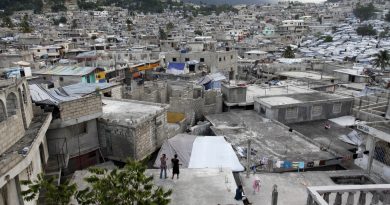Russia Takes Chernobyl and Holds Staff Hostage as Radiation Levels Increase
Kathryn Natale
Staff Writer
On February 24, Russian troops captured the Chernobyl nuclear power plant and its exclusion zone, the 30 kilometer area around the site of the 1986 Chernobyl disaster, reports Radio Free Europe. The situation escalated when it was reported by CNN that soldiers were holding power plant staff hostage. On February 25, Reuters said that both the Ukrainian nuclear agency and interior ministry had reported increased radiation levels coming from the plant.
The capture of the Chernobyl nuclear power plant was first announced by Ukrainian Prime Minister Denys Shmygal. Radio Free Europe reports that he stated there were initially “no victims at the moment.”
The Ukrainian National Guard met the Russian troops at Chernobyl, but when the fighting ended on the first day of the invasion, the power plant was under Russian control. The Associated Press reports that a senior American intelligence official said the accepted belief was that Russian forces would take Chernobyl and then move on to the Ukrainian capital, Kyiv, which lies about 80 miles to the south of Chernobyl.
CNN reports that information about the hostages still remains unknown, such as how many there are or what their names are, but the White House has said that the reports of their existence are credible. White House Press Secretary Jen Psaki called the action “obviously incredibly alarming and greatly concerning,” condemning it as “unlawful and dangerous,” as reported by CNN. She went on to say “[w]e condemn it and we request their release.”
According to Reuters, a Russian security source said that the capture of Chernobyl was intended as a signal to NATO that they should not engage in the conflict, which is the “biggest attack on a European state since World War Two.”
After the nuclear disaster at Chernobyl on April 26, 1986, attempts were made to contain the radiation that still leaked from the plant. If these containment facilities are damaged due to the fighting, they could seriously affect civilians living in the surrounding area. Anton Herashenko, a member of the Ukrainian Interior Ministry, warned that the radiation could impact Ukraine, Belarus, and other European countries.
Compounding this, Reuters reported on February 25 that the troop activity at Chernobyl was already causing the measured radiation levels to increase up to 9.46 micro-Sieverts per hour in some places, which experts believe could be the result of increased troop and machine movement kicking up radioactive dust. The International Atomic Energy Agency says that this level does not put the general public at risk, and the radiation appears to be contained at the site, with neighboring Poland not detecting any increase within its borders. It is also possible that the increase in radiation is inaccurate and is the result of cyberattacks targeting technology, says CRIIRAD, a French-based company that watches nuclear radiation around the world, reports RTE.
The Director General of the IAEA, Rafael Mariano Grossi, has said that “maximum restraint” on conflict around Ukraine’s nuclear facilities is needed to maintain safe operations, according to CBS News. The 1986 disaster in Chernobyl led to at least 32 immediate deaths and around 11,000 cases of thyroid cancer in its aftermath. A nuclear disaster in the midst of the current armed conflict could have terrible consequences.
Ukrainian President Volodymyr Zelensky tweeted on February 24 that the Ukrainian “defenders are giving their lives so that the tragedy of 1986 will not be repeated.” He went on to say that the capture of Chernobyl was “a declaration of war against the whole of Europe.”

